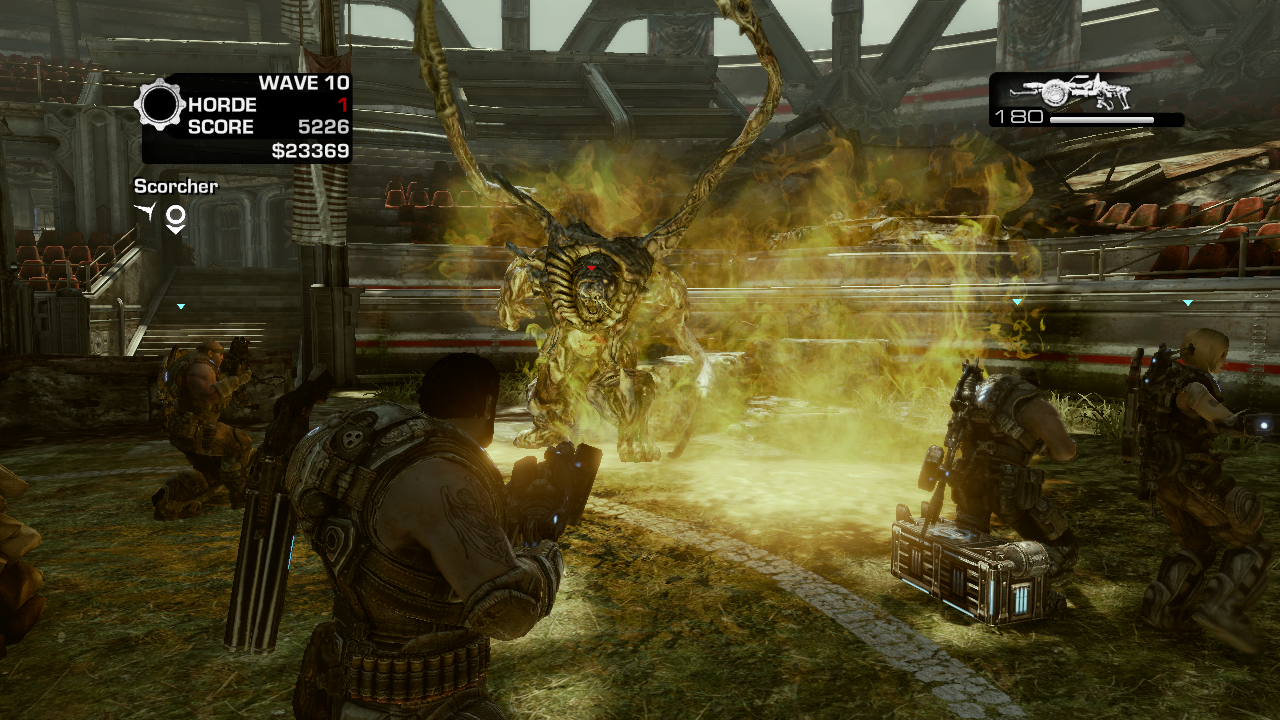
Horde/Swarm Modes with Rewards
The Gears of War series brought the term “horde mode” into popular vernacular, despite its existence before that game. While it did help make such a thing popular and actually help to contribute, in its own way, to the “rise of co-op gaming,” it also had an unintended side effect. Specifically, the idea of “slap a horde mode on a game and call it a day.” That’s not enough. To quote Sam again, “If I wanted to face endless hordes of mindless beasts I'll stick to real life thank you.”
The best cases of horde/swarm modes done well are those that combine both of the previous ideas and add a little something extra: rewards for cooperation. Take, for instance, Mass Effect 3’s “Galaxy at War” mode. Players could choose their particular class, with each one helping to fulfill at least some partial role on a team, and only by working together could the three-player teams achieve victory in the mission. While the game did not directly detect and punish “lone wolfs,” players that tried to solo packs of enemies often fell to enemy fire and found staying/working with the group a more effective strategy. Players also felt more of a desire to work together to achieve victory as success in a mission had tangible rewards in the form of “booster packs” and character levels.
It’s worth pointing out, however, that offering rewards is not enough. Doling out riches has to be done in just the right way. Give them out too frequently and players burn through the content, never to return. Give them out not frequently enough (which is the case with Payday 2), and players lose interest or don’t feel motivated enough to work as a team. Striking the right balance between the two ensures players will not only keep playing, but want to keep playing together.

Embrace The Co-Op Experience
All of what’s been discussed so far have been specific mechanics or ideas to incorporate into a game, but there’s one vital idea that cannot be left out: the overall experience. Combining all of the ideas discussed so far definitely helps, but the game still needs that certain element to really bring players together. Marc Allie described it as going “beyond two or more people playing at the same time.” It’s that part of the game that isn’t really a specific part of the design and often times something that comes about through the overall whole.
The best co-op games out there can be broken down into their individual pieces and then restructured into new wholes with different glosses of paint and gameplay mechanics. Yet it is not those pieces that make a co-op game great. The greatest co-op games are those that bring players together, regardless of the type of game, and allows all of them to celebrate in the victory as a team. To truly embrace the benefits of co-op gaming and gaming as a whole.
Our EIC and founder, Nick Puleo, put it best:
It's that feeling you get when you successfully accomplish something after many failures with other folks; the camaraderie it builds. That satisfaction is something that can't be felt in any other type of gaming.